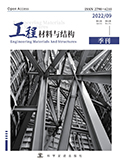参考文献
[1] Han B, Zhang L, Ou J. Smart and Multifunctional Concrete toward Sustainable Infrastructures[M]. Berlin: Springer, 2017.

